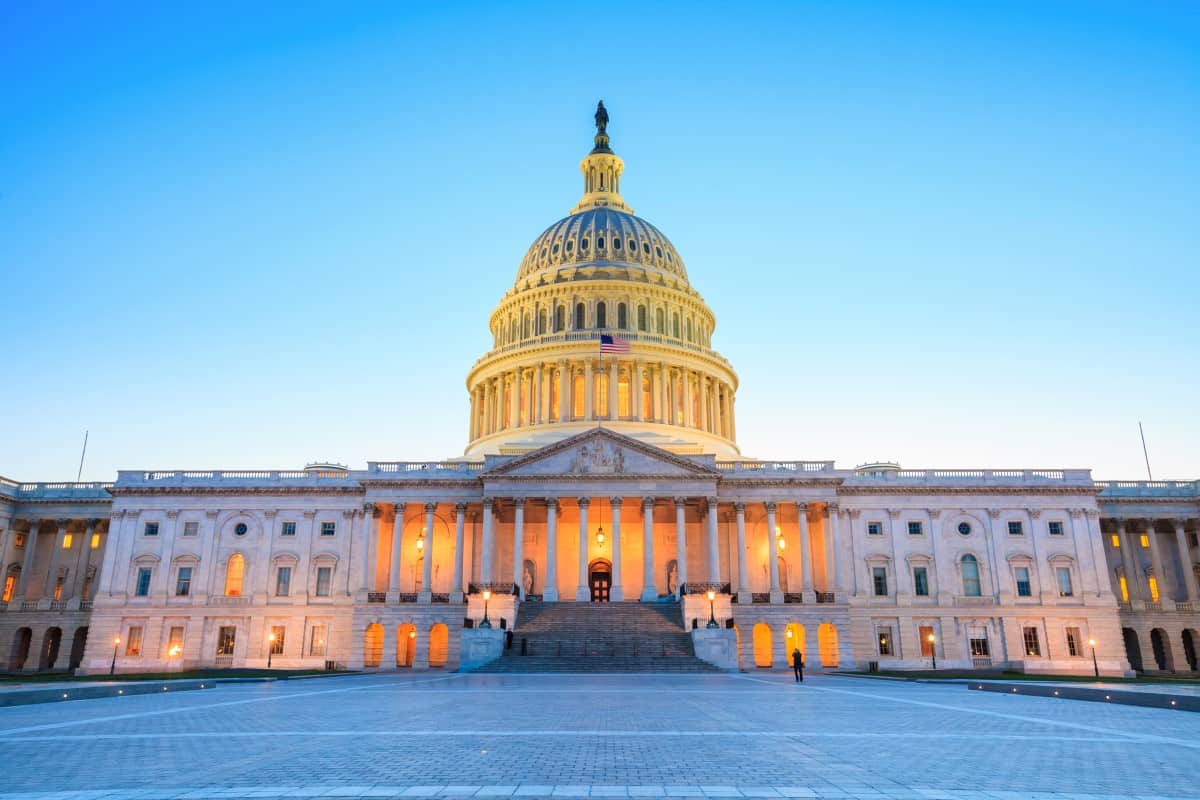Retirement Expectations Clash with Reality as Social Security’s Future Remains Uncertain

As economic concerns continue to grow, a significant disconnect persists between how non-retirees perceive their future financial stability and the actual experience of current retirees, particularly with respect to Social Security.
Gallup’s 2024 Economic and Personal Finance survey

According to Gallup’s 2024 Economic and Personal Finance survey, 75% of retirees believe they have enough money to live comfortably, while only 45% of non-retirees anticipate the same. This disparity, which has remained consistent for more than two decades, raises concerns about the effectiveness of current retirement planning strategies.
As inflation and rising living costs eat away at savings, the importance of Social Security in maintaining financial security during retirement cannot be overstated. Yet, the future of the program itself is increasingly precarious, and that leaves many Americans uncertain about its role in their financial futures.
Social Security Is a Critical Lifeline for Retirees

One of the clearest takeaways from Gallup’s report is retirees’ heavy reliance on Social Security. As many as 58% of retirees list Social Security as their primary source of income. This figure is strikingly higher than the 35% of non-retirees who expect the program to be a major part of their retirement income.
This reliance has increased as traditional pension plans have largely disappeared, leaving Social Security and personal savings — often in the form of 401(k) investments — as primary income sources in retirement. For many, this shift has resulted in financial uncertainty, with concerns about outliving savings and whether Social Security will provide adequate support in the future.
Financial Necessity Drives Retirees Back To Work

Interestingly, retirees increasingly choose to return to the workforce due to financial necessity or desire for social and emotional benefits. According to research from T. Rowe Price, roughly 48% of retirees return to work for economic reasons, while 45% cite emotional or social benefits as a primary motivator.
Part-time work is an increasingly common retirement strategy, particularly as more retirees seek to transition gradually into retirement rather than stopping work altogether. The report finds 57% of retirees wish to continue working in some capacity, while 43% would prefer to stop working entirely. This trend underscores the evolving nature of retirement, where retirees seek financial security as well as purpose and engagement in their later years.
Motivations for retirees returning to work differ by gender and marital status. Women and single retirees are more likely than men or married couples to report they work primarily for financial reasons, while men often cite social connections as a key motivation. These findings highlight the complex interplay between financial necessity, personal fulfillment, and retirement planning decisions.
Delaying Retirement Can Boost Financial Stability

Unretirement or delaying retirement can mean substantial financial benefits. Working a few extra years can significantly increase the probability of financial success in retirement, primarily through delayed Social Security benefits and retirement account withdrawals.
Delaying Social Security benefits can be one of the most powerful strategies for enhancing long-term financial stability. Payout increases 8% for every year retirees delay benefits beyond full retirement age (FRA) — until age 70. On the other hand, claiming Social Security as early as age 62 results in a permanent reduction of nearly 30% of benefits.
For those who return to work after claiming Social Security benefits, there are options to withdraw or suspend benefits to maximize future payouts. These complexities highlight the importance of careful planning to maximize social security benefits.
The Looming Crisis of Social Security Trust Fund Depletion

While delaying retirement can provide individual benefits, the primary issue looming over the retirement landscape is the future of Social Security itself.
The 2024 Trustees of Social Security and Medicare report reveals the Old-Age and Survivors Insurance (OASI) Trust Fund, which finances retirement and survivors’ benefits, can only pay 100% of scheduled benefits until 2033. After that, the program’s depleted reserves will only cover about 79% of promised benefits.
Combined with the Disability Insurance (DI) Trust Fund, the outlook for Social Security extends to 2035, after which benefits will drop to 83% of their scheduled amounts. Though experts project the DI Trust Fund will remain solvent through at least 2098, this does little to mitigate concerns over the more immediate OASI shortfall.
Medicare Faces Rising Costs and Uncertain Future

Medicare faces similar challenges. The Hospital Insurance (HI) Trust Fund’s exhausted reserves can only pay full benefits until 2036, covering just 89% of scheduled benefits after.
While Medicare’s Supplemental Medical Insurance (SMI) Trust Fund, which covers Part B and Part D expenses, is adequately financed due to automatic premium adjustments, its rising costs burden both beneficiaries and taxpayers.
According to the Trustees’ report, rapidly rising SMI costs could have significant implications for future government spending and the financial security of Medicare recipients.
Legislative Action Needed To Secure Social Security’s Future

The Trustees’ report is a stark reminder that without significant legislative action, the future of Social Security and Medicare remains uncertain. While both programs are currently solvent, the long-term projections indicate shortfalls are inevitable without intervention.
Lawmakers have several options to address the funding gaps. These include raising the Social Security payroll tax, increasing the retirement age, reducing benefits, or applying means-testing to wealthier recipients. However, as the report emphasizes, delaying these decisions will make implementing solutions more difficult and painful. Taking action sooner allows for a broader range of choices and provides time for the public to adjust.
For millions of Americans, the future of Social Security and Medicare is crucial to their financial security in retirement. The sooner policymakers stabilize these programs, the more likely current and future retirees can enjoy the financial comfort and stability they’ve worked so hard to achieve.
Public Confidence in Social Security Remains Low

Despite Social Security’s current importance to many retirees, confidence in its future is low among younger generations. Gallup’s survey found that only 50% of non-retirees expect Social Security to be available when they retire, while 80% of those under age 62 worry Social Security won’t exist when they’re eligible.
This lack of confidence is understandable, given projected shortfalls and uncertainty surrounding potential policy changes. However, it underscores the need for younger workers to plan carefully for retirement, focusing on building personal savings and exploring additional income sources, such as part-time work, even after retirement.
Related: Low Stress Jobs For Retirees
Bridging the Retirement Expectation Gap

The gap between retiree reality and non-retiree expectations reflects a deepening concern over the future of retirement security in America. While many retirees report feeling financially stable, this comfort heavily relies on Social Security, a program whose future remains uncertain.
As lawmakers weigh solutions to secure Social Security and Medicare, the onus is increasingly on individuals to take control of retirement planning. Financial planning is fundamental whether delaying retirement, continuing to work part-time, or supplementing income through personal savings.
With rising living costs and longer life expectancies, ensuring financial stability in retirement is more challenging than ever — but also more critical.
Like Financial Freedom Countdown content? Be sure to follow us!
Thinking of Retiring Abroad? Hold on! Avoid These 9 Countries Where Claiming Social Security Isn’t an Option

Dreaming of retiring to picturesque locales? Many Americans yearn for foreign adventures in their golden years. Yet, securing Social Security benefits abroad isn’t guaranteed. Before jetting off, learn which nine countries may disrupt your retirement dreams.
Master the Two Key Numbers for Financial Independence

Dreaming of retirement? It might feel distant, but reaching that magic number in your bank account is key. Yet, standard financial calculators offer generic figures. Unveil the path to financial freedom by focusing on just two vital numbers: retirement expenses and safe withdrawal rate. Let’s explore how to calculate these for your unique lifestyle.
Master the Two Key Numbers for Financial Independence
What SECURE Act 2.0 Means for Your Future Retirement Plan

Three years on from the groundbreaking SECURE Act, which revolutionized America’s retirement landscape for the first time in a decade, the SECURE Act 2.0 sequel legislation aims to widen the gateway to retirement plans and benefits, introducing pivotal changes like automatic enrollment in select workplace pensions, increased catch-up contributions for the seasoned workforce, and extended retirement saving opportunities for part-time employees. Moreover, it promises to bolster individuals’ ability to set aside emergency funds, ensuring swift access in times of need, marking another significant stride toward securing a more financially stable future for all. Here are some of the key provisions.
What SECURE Act 2.0 Means for Your Future Retirement Plan
2025 Social Security COLA Forecast Disappoints Retirees Struggling to Keep Up with Soaring Inflation

The official Social Security cost-of-living adjustment (COLA) numbers released on 10th October are a disappointing 2.5%, a sharp drop from the 3.2% increase retirees received in 2024. Next year’s COLA falls far short of the 8.7% adjustment for 2023, which was the largest increase in over 40 years and meant to help seniors and people with disabilities keep up with soaring prices. This meager adjustment raises concerns about how seniors will cope with persistent inflation
2025 Social Security COLA Forecast Disappoints Retirees Struggling to Keep Up with Soaring Inflation
Is Tapping Your 401(k) to Delay Social Security Until 70 a Risky Move for Your Retirement?

Choosing when to claim Social Security is a crucial decision for retirees. The two main options are claiming benefits at 62 to conserve retirement savings or using 401(k) funds to delay Social Security until 70. Both strategies come with pros and cons, depending on your financial needs and long-term goals.
Is Tapping Your 401(k) to Delay Social Security Until 70 a Risky Move for Your Retirement?
Is the 4.28% Treasury I Bond Rate Your Last Chance to Lock in a Strong 30-Year Fixed Rate? Here’s Why It’s Likely to Drop After October

Inflation has become a significant concern. During the past three years of surging inflation, I bonds offered a safe and attractive investment option. However, with recent lower CPI numbers, the current composite rate for I bonds has dropped to 4.28%, a sharp decline from the enticing 9.62% annual rate available in May 2022. As rates decrease, investors are now considering whether it’s still worth buying Series I bonds before the October 31st deadline when rates are expected to reset lower.

Did you find this article helpful? We’d love to hear your thoughts! Leave a comment with the box on the left-hand side of the screen and share your thoughts.
Also, do you want to stay up-to-date on our latest content?
1. Follow us by clicking the [+ Follow] button above,
2. Give the article a Thumbs Up on the top-left side of the screen.
3. And lastly, if you think this information would benefit your friends and family, don’t hesitate to share it with them!
John Dealbreuin came from a third world country to the US with only $1,000 not knowing anyone; guided by an immigrant dream. In 12 years, he achieved his retirement number.
He started Financial Freedom Countdown to help everyone think differently about their financial challenges and live their best lives. John resides in the San Francisco Bay Area enjoying nature trails and weight training.
Here are his recommended tools
Personal Capital: This is a free tool John uses to track his net worth on a regular basis and as a retirement planner. It also alerts him wrt hidden fees and has a budget tracker included.
Platforms like Yieldstreet provide investment options in art, legal, structured notes, venture capital, etc. They also have fixed-income portfolios spread across multiple asset classes with a single investment with low minimums of $10,000.





